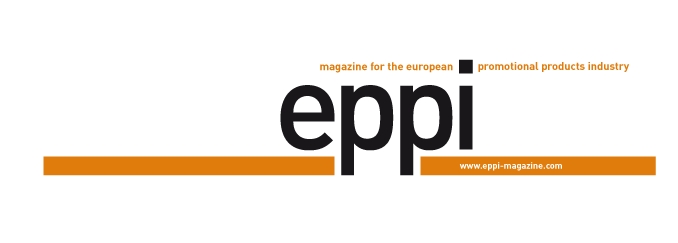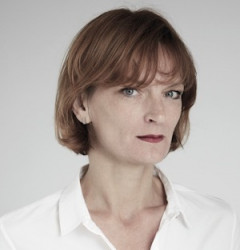
Clara Fort
Kodak is a brand with a long tradition that has already mastered several crises. Today, Kodak uses licensing to position itself within the lifestyle segment, beyond its traditional business areas of film, commercial print as well as advanced materials and chemicals, and to reach younger target groups.
eppi magazine spoke with Clara Fort, Vice President Global Brand Licensing at Eastman Kodak Company, about how a brand’s DNA can be further developed through collaborations and haptic branding, about the connection between marketing and licensing, and about the multi-sensory experience of brand stores.
The Kodak brand looks back on a long history. How would you describe the brand DNA of Kodak and how has it changed over the course of more than a century?
Clara Fort: Kodak has always stood for quality and creativity and that is still the case today. We remain true to our DNA and that is how we are currently developing our brand.
In the past, the main focus was on photography and photographic technology. Now, you have lifestyle collections comprising of apparel and luggage items. How does this build on the legacy of the brand and what is the role of brand licensing in Kodak’s business model today?
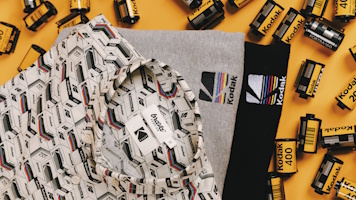
The Kodak shirts from Brava aim to capture the timeless beauty of analogue photography. However, the collection not only stands for creative fashion, but also for sustainability. The garments are made in Portugal from organic cotton.
Photography has been central to Kodak for about 100 years. Apparel and luggage items build on the legacy of the brand because fashion and travel are associated with photography. Kodak is mostly familiar with people over 35. We want to make sure that younger generations get to know the brand. There are many examples of how we reach the younger generation through licensing. The role of brand licensing today is to continue to expand the awareness of the brand in terms of both demographics and geography – and to make a significant contribution towards Kodak’s profitability, of course.
Your apparel collection has a distinct retro vibe, which is very trendy at the moment. Some items look like they originate from the 1970s. Did Kodak already use branded T-shirts etc. in the past?
I suppose Kodak used shirts for merchandising purposes in the 1970s and 1980s. Now, we have a full head-to-toe lifestyle offer. We not only have lifestyle products, but also consumer electronic products developed under license.
Could you cite some examples of recent collaborations between Kodak and selected lifestyle brands?
For collabs we either work directly with big retailers to increase the brand exposure and brand reach, or we collaborate with more targeted brands to address a very specific audience.
We launched a men’s collection last September with Lojas Renner, a big Brazilian retailer with around 600 stores in Brazil, Argentina and Uruguay. This was a collection with a 1990s retro vibe.
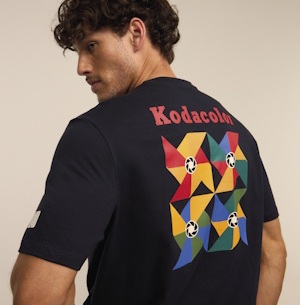
The Kodak shirt from the Lojas Renner men’s collection is distributed by the Brazilian retail group directly through its shops in South America.
Furthermore, last summer, we cooperated with Stradivarius, part of the Spanish Inditex group that also owns Zara. They operate around 950 stores in 75 countries – again, a huge retailer with great visibility and strong marketing. The collection targeted young women, so a different demographic than Lojas Renner. Stradivarius also used licensed cameras in their communication, enhancing the Kodak brand.
We also worked together with various French retailers in 2024. One of them, Jennyfer, maintains 220 stores for women apparel in France. In 2025 we will have a unisex capsule collection with Promod for Valentine’s Day, which will be merchandised in several hundred stores.
For targeted brands, we have a collab with the Spanish brand, Brava, which is based in Barcelona. The collection was so successful that we launched a second and a third capsule. The collection comprises of items for both men and women. It is very colourful and the campaign is shot on Kodak film. In other words, we always integrate various elements in marketing campaigns such as products or film to reflect on the brand identity and DNA.
This approach also becomes apparent in our project with Anya Hindmarch, a luxury brand for bags and accessories. They contacted us because they wanted to make a charm replicating a film roll: a beautiful leather piece that was retailing for about 200 British Pounds. This shows the strength of the brand that has been around for so many years and is so well-known all over the globe.
What are your criteria when selecting these licensing partners and products?
First we ensure that collaborations and products align with Kodak’s brand identity, encompassing lifestyle and consumer electronics. All opportunities must connect to photography, image, print, film, light, and related extensions. We also have TV licensees, solar panels, and a new license in China for automotive protective film. Brand alignment is crucial when select partners, as it goes beyond logos to consistently represent the brand. Secondly, our partners have to be experts in their fields to deliver high-quality products with creative designs.
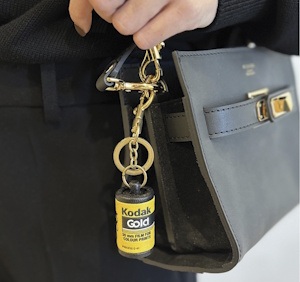
The exclusive Kodak film roll pendant by Anya Hindmarch made of high-quality leather combines retro charm with modern design and shows the brand’s radiance.
The third criteria is our focus on establishing long-term partnerships. Once contracts are signed, we aim to grow collaboratively with our partners. We seek new partnerships only if an existing partner is unable to expand in a specific region or in product line extension.
There are additional criteria to consider, such as sustainability. For instance, Brava’s entire product line is organic and sustainable. Kodak now has a sustainability report, and we are encouraging our licensees to move in this direction.
How does haptic branding using licensed products contribute towards Kodak’s overall marketing strategy?
Kodak licensing is about brand relevance, brand visibility and profitability. It reaches new demographics in specific regions while maintaining a consistent brand image globally and across different product categories. That is very important. That is what we are working on. Kodak strives to ensure that customers, regardless of whether they are in the USA, China, Australia, South Africa, or other locations, have the same consumer experience. This consistency is a key factor in our strategy.
Do you also use branded products as promotional items or giveaways for campaigns?
We sometimes engage in promotions, but not often. We use our licensed products for some movie launches when we are being asked by the Kodak Motion Picture Team. For example, the actors are given some of those Kodak cameras for the opening party. It is more marketing, rather than promotion, strictly speaking. Our licensees might use some promotional products when they organize an event, but we don’t sign promotional products licenses.
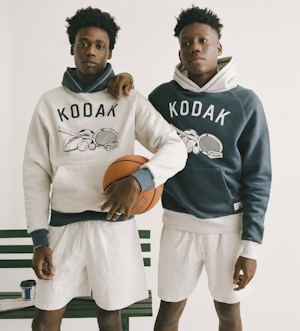
To mark Knickerbocker’s Kodak collection, the Kodak Camera Club and the American sportswear brand organised a photo competition in which participants could submit their pictures taken on Kodak film.
What is your favourite Kodak campaign that used haptic branding?
There are several, mostly related to photography. We did a collab with the American clothing brand, Knickerbocker, and they conducted an online photo competition – shot on Kodak film, of course. The contest was very well-organised and engaging, and it had great visibility on social media.
Our apparel licensee in Korea runs a campaign on three short movies – as Kodak is related to motion pictures – to promote the brand. These movies combine short stories about our brand alongside Korean trends. I was in Korea last September and saw the different types of Kodak lifestyle stores which provide an immersive experience. The collections are showcased with referencing Kodak’s history such as old advertising posters, commercials, and Kodak film packaging. You can create your own T-shirts at instant print stations. References to the Kodak Camera Club and the iconic Colorama collection, displayed in New York’s Central Station for 35 years, are available. A playlist referencing these images provides an immersive experience. Share music and moments, and take selfies with a Times Square backdrop in the changing rooms. It’s all about the experience.
What is the significance of such a brand store and its multi-sensory experiences in a digital world? Why is it important for creating memorable brand experiences?
Kodak’s history with photography is about capturing happy moments and sharing memories. Despite the wait time and average image quality, kids today love using 35-millimetre cameras for that retro feeling. This isn’t just a trend; it’s like the resurgence of vinyl records—offering a different medium with unique qualities. We all seem to crave something tangible.
Andreas J. Haller spoke with Clara Fort.
photos: Kodak


